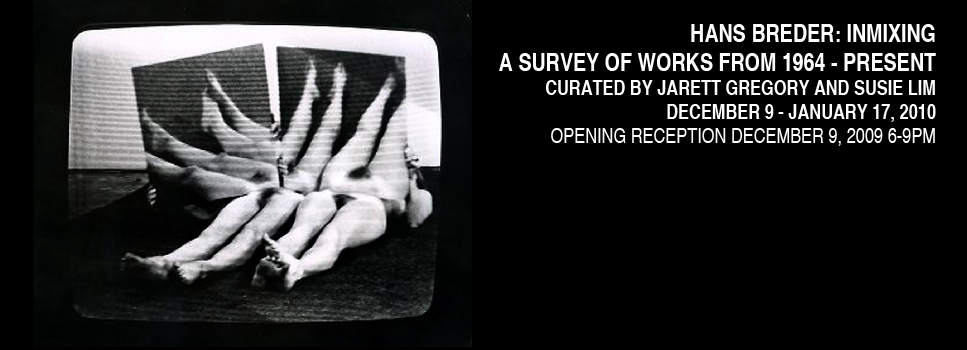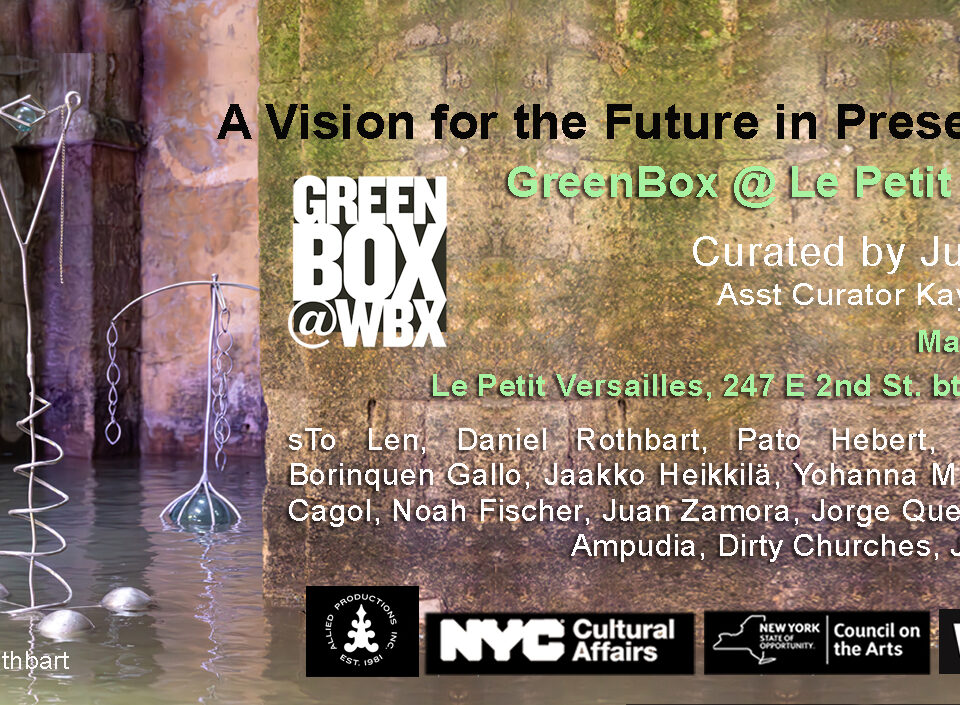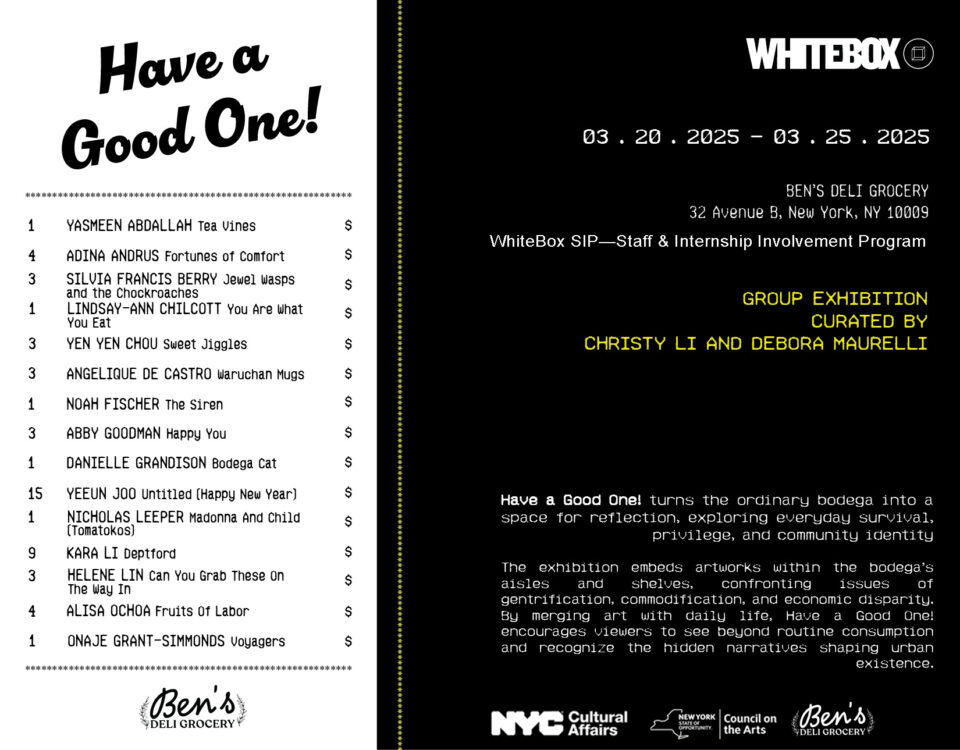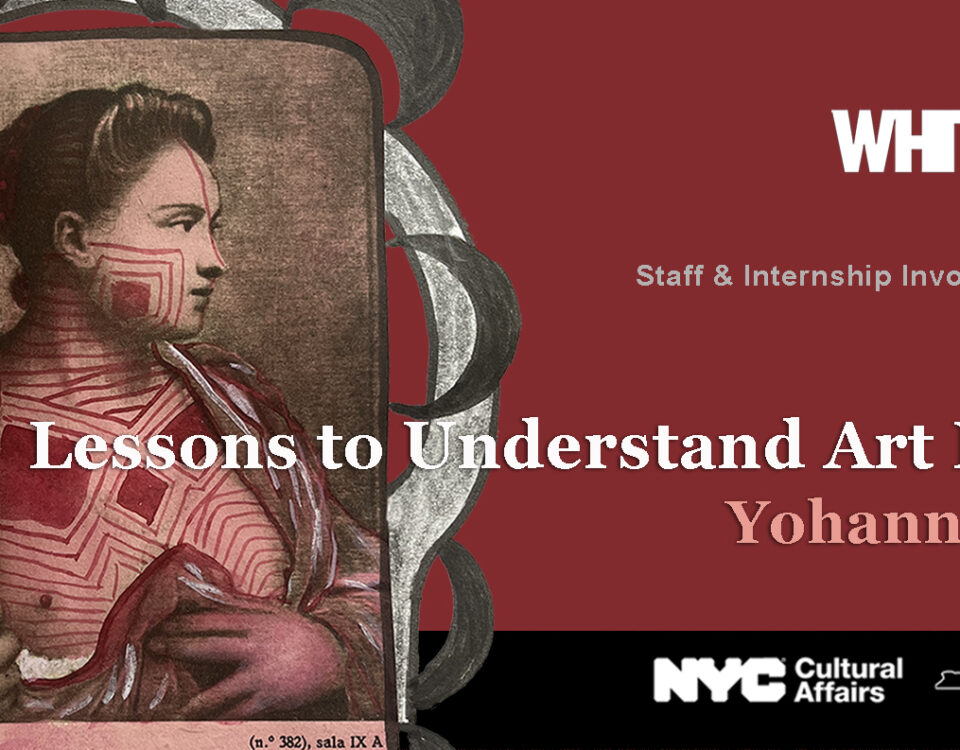Juanli Carrión: Atlas Shrugged
November 23, 2009Robert Priseman: NO HUMAN WAY TO KILL – PART I
March 16, 2010A Survey of Works from 1964 – Present
Curated by Jarrett Gregory
Co-Curator: Susie Lim
Exhibition Concept: Juan Puntes
Exhibition Design: Jee Won Kim
December 9 – January 17, 2010
Opening Reception: Wednesday, December 9, 6:00 – 9:00 pm

White Box is pleased to present the most comprehensive survey to date of early to recent media works by the seminal pioneer of Intermedia art, Hans Breder. The exhibition will run from 9 December through 17 January, 2010. This exhibition features the full breadth of Breder’s body of work, including never-before-seen early video works and sculpture along with new photography and video installations displayed on both levels of White Box’s two-floor exhibition space.
On December 16 at 7pm, Herman Rapaport will moderate a panel discussion with Donald Kuspit and Bonnie Marranca. Closing the exhibition on January 17 at 7pm will be a special lecture/event “Corpus Speaking,” performed in collaboration with Hans Breder, Herman Rapaport and Elliott Sharp. The exhibition will travel to the Ostwall Museum, Dortmund, Germany in 2011, with future exhibition venues to be announced. A unique limited edition, featuring an interchangeable folio of images and texts designed to accompany the exhibition, will be signed by the artist and launched as a special performance.
The title of the show references the Lacanian term of “inmixing,” described by Herman Rapaport as the “extradimensionality that is made possible by introducing a lack, break, knot, or fold that is the mark of the subject: its signifier.” According to Rapaport, “this corresponds to how Hans Breder would develop his idea of Intermedia: as an inmixing of different or “other” media whereby one actually embeds sounds, images, performances by means of complex interpositions.”
Born in Herford, Germany in 1935, Hans Breder moved to Hamburg in 1959 to study at the Hochschule für Bildende Künste. Two years later, he received the prestigious Studienstiftung des deutschen Volkes. In 1964, Breder arrived in New York City where his constructivist-aligned work quickly garnered critical praise and in 1967 he had his first solo show at the Richard Feigen Gallery. Soon after, the University of Iowa invited him to teach in the School of Art and Art History. In 1966, Breder moved to Iowa City, Iowa, and in 1968 he established the nation’s first MFA program in Intermedia Arts. Breder founded the Intermedia Program as an arena in which he and his students could explore, in theory and in practice, the liminal spaces between the arts: art, music, film, dance, theater, poetry. In the second and third decade of the Intermedia Program, Breder extended his collaborative reach to the liberal arts: comparative literature, anthropology, psychology, communication studies. Also key to his notion of Intermedia was the recognition that to develop the experimental arts in an entirely rural environment, an active visiting artists program was necessary. One of Breder’s first visiting artists was Robert Wilson, who developed “Deafman Glance” in Iowa City in 1970, and his students included Ana Mendieta and Charles Ray. From 1969 – 2000, visiting artists and critics included Hans Haacke, Allan Kaprow, Willoughby Sharp, Elaine Summers, Vito Acconci, Nam June Paik, Dennis Oppenheim, Carolee Schneemann, Karen Finley, Ben Vautier, George Kuchar, Yvonne Rainer, Trinh Minh-ha, Donald Kuspit, Roselee Goldberg, John Hanhardt, Barbara London, amongst numerous others.
Over the last forty years, Breder has worked in and between a number of media including painting, sculpture, photography, performance, video, and electro-acoustic media. His intermedia work has been featured in three Whitney Biennials (1987, 1989, 1991), “The First Group Exhibition of American Art in Moscow” (1989), “An American Odyssey” (2004) in Madrid and most recently “Ana Mendieta and Hans Breder: Converge” (2008) Galerie Lelong, New York as well as numerous other exhibitions from Mexico City to Fukui, Japan. His work has been collected by museums and galleries around the world including The Museum of Modern Art and The Whitney Museum of American Art in New York. “Zwielicht,” was commissioned for the 6th International Bach-Symposium, a symposium at the University of Dortmund in Germany (2008). Collections include Cleveland Museum, Cleveland, Ohio; Hirshhorn Museum and Sculpture Graden, Washington, D.C.; The Museum of Modern Art, New York, New York; The Whitney Museum of American Art, New York, New York; Walker Art Center, Minneapolis, Minnesota. His work is represented by Mitchell Algus Gallery, New York and Hachmeister Galerie, Muenster, Germany.
Special thanks to Herman Rapaport, Juan Puntes, Susie Lim, Jee Won Kim, Architect and Ben Salesse, Graphic Designer.




